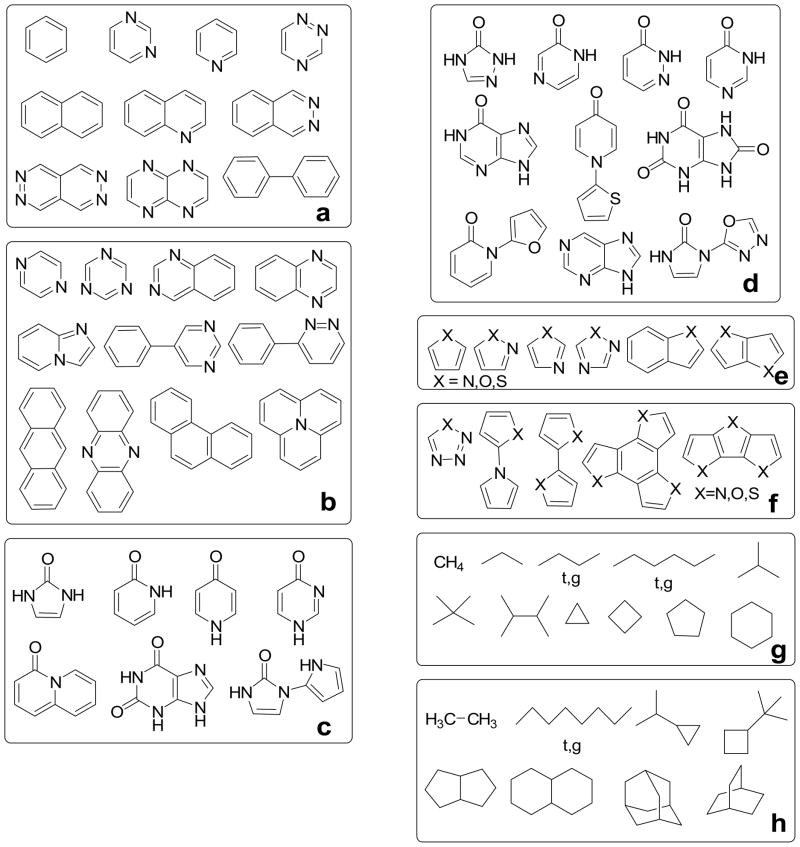Figure 3.
The molecules used are divided in 12 datasets and six chemical classes: the heteroaromatics training set ‘aromatics-t’ (a), the heteroaromatics validation set ‘aromatics-v’ (b), the pyridones training set ‘pyridones-t’ (c), the pyridones validation set ‘pyridones-v’ (d), the furans training set ‘furans-t’ (X=O), the pyrroles training set ‘pyrroles-t’ (X=N), the thiophenes training set ‘thiophenes-t’ (X=S) (e), the furans validation set ‘furans-v’ (X=O), the pyrroles validation set ‘pyrroles-v’ (X=N), the thiophenes validation set ‘thiophenes-v’ (X=S) (f), the alkanes training set ‘alkanes-t’ (g) and the alkanes validation set ‘alkanes-v’ (h). The X atoms in a molecule are either all O, all S, or all NH. In the case of n-butane, n-hexane and n-octane, two conformers are considered: all trans (t) and gauche (g).

